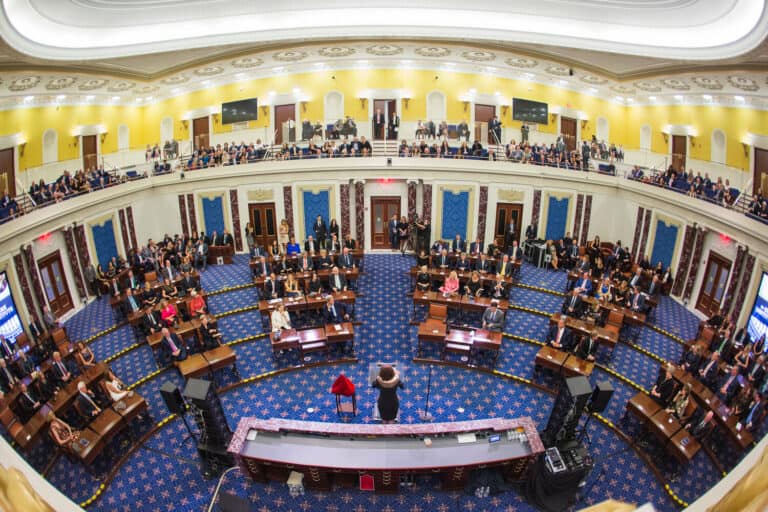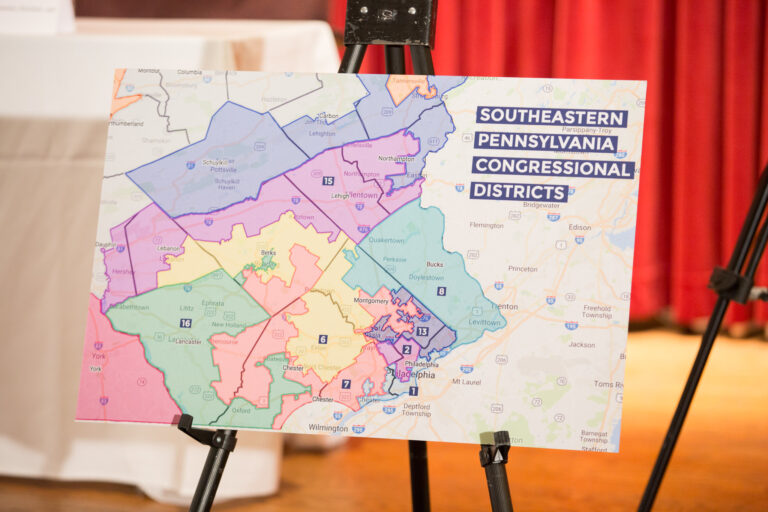
Andrew Strom is a union lawyer based in New York City. He is also an adjunct professor at Brooklyn Law School.
After the oral argument in Epic Systems Corp. v. Lewis, I wrote that the five Republican appointees on the Supreme Court would have to put their thumbs heavily on the scale for the employers to prevail. Sadly, it was no surprise that this is exactly what happened. At one point, Justice Gorsuch asserted that using the National Labor Relations Act and the Norris-LaGuardia Act to limit the scope of the Federal Arbitration Act would be like hiding an elephant in a mousehole. Of course, what he really means, is that the Supreme Court has turned the FAA, a modest statute designed to facilitate commercial arbitration, into an elephant and it has reduced the NLRA, which was supposed to be the workers’ Magna Carta, into a mousehole.
Justice Gorsuch’s majority opinion is full of half-truths and misleading statements, but what’s especially obnoxious is the phony modesty. Here are two of the most offensive assertions in the opinion: “Allowing judges to pick and choose between statutes risks transforming them from expounders of what the law is into policymakers choosing what the law should be,” and “[w]e have sought and found a persuasive interpretation that gives effect to all of Congress’s work, not just the parts we might prefer.” The latter statement is at least delusional if not a baldfaced lie.
To reach their desired result, Gorsuch and his colleagues engage in several sleights of hand. The first of these is the failure to acknowledge the significance of the Norris-LaGuardia Act, one of the most important pieces of pro-worker legislation ever enacted by Congress. Justice Ginsburg lays out the history behind the Norris-LaGuardia Act in her dissent. Before the Act was passed, employers routinely invoked the concept of liberty of contract to defend against any efforts to regulate the workplace. And, employers routinely required workers to sign agreements preventing them from joining together with their co-workers to present their grievances. The Norris-LaGuardia Act starts off with the Congressional finding that “the individual unorganized worker is commonly helpless to exercise actual liberty of contract and to protect his freedom of labor.” The Act proclaimed a public policy giving workers full freedom to engage in concerted activities for “mutual aid or protection,” and it held that any undertaking or promise in conflict with that public policy is unenforceable.
Gorsuch starts his opinion with the following sentence: “Should employees and employers be allowed to agree that any disputes between them will be resolved through one-on-one arbitration?” The Norris-LaGuardia Act provides a simple answer: “No,” because as Congress explained, the individual unorganized worker cannot be forced to waive her right to engage in concerted action with her co-workers for their mutual aid and protection.
Another sleight of hand in the opinion is failure to acknowledge the sweeping nature of the agreements the employers imposed in these cases. Gorsuch’s opinion repeatedly invokes class action lawsuits, but the actual agreements bar each worker from joining with even a single co-worker to present their cases together. Here’s an example of his framing of the case: “The notion that Section 7 [of the National Labor Relations Act] confers a right to class or collective actions seems pretty unlikely when you recall that procedures like that were hardly known when the NLRA was adopted in 1935.” While it’s true that the modern class action rules came later, as Justice Ginsburg pointed out group litigation dates back to medieval times, and there are plenty of instances of workers banding together to sue their employers in the early Twentieth Century.
One of the most misleading parts of the decision is Gorsuch’s discussion of the National Labor Relations Board’s approach to this issue. Gorsuch implies that the NLRB had somehow only recently discovered the rights at issue in this case: “In 2012, the Board – for the first time in the 77 years since the NLRA’s adoption – asserted that the NLRA effectively nullifies the Arbitration Act in cases like ours.” What’s missing from this half-truth is the acknowledgement that in 2001, for the first time in the 76 years since the Federal Arbitration Act’s adoption, the Supreme Court held that the Arbitration Act applies to employment contracts. It was this 2001 decision that opened the floodgates for mandatory employment arbitration agreements, and that gave the Board its first chance to consider any conflict between the Arbitration Act and the NLRA.
Nowhere in his opinion does Gorsuch acknowledge that for over 75 years, the NLRB and the courts have uniformly agreed that the NLRA’s statutory language protecting the right of workers to engage in “concerted activities for the purpose of … other mutual aid or protection” applies to workers who pursue collective legal actions. In a 1978 case, the Supreme Court observed that “it has been held that the ‘mutual aid or protection’ clause protects employees from retaliation by their employers when they seek to improve working conditions through resort to administrative and judicial forums.” The Court cited three circuit court decisions and seven NLRB decisions as examples. Instead of conceding how well-settled this question had been, Gorsuch suggests that the NLRA can’t be read to protect the right to engage in collective litigation because it doesn’t provide any “specific guidance” about what procedures would be necessary to adequately safeguard the workers’ rights. But anyone who has read the statute, or any of the Supreme Court cases interpreting the NLRA could tell you that the NLRA doesn’t provide “specific guidance” about most labor law questions. For instance, the statute doesn’t say when an employer must allow workers to wear union insignia and when an employer may limit the wearing of insignia, it doesn’t say when an employer may limit the distribution of union literature, it doesn’t say which bargaining subjects are mandatory and which ones are permissive, it doesn’t provide “specific guidance” about an employer’ duty to provide a union with information, or about whether an employer has a right to permanently replace strikers. Answers to all of those questions, and many others, have developed through case law over the years.
One final point about Gorsuch’s opinion, which has not gotten much attention in the initial round of coverage, is that lying at its center is an alarming example of appellate fact-finding. The Supreme Court is not supposed to engage in fact-finding. Instead, it is supposed to decide cases based on the record developed in the trial court, or on the type of undisputed facts that a court may take judicial notice of (such as the distance between two cities). Without citing any record evidence, Gorsuch declares that allowing workers to bring collective actions would sacrifice the “informality” that is one of arbitration’s fundamental attributes. The only authority Gorsuch cites for this assertion is AT&T Mobility LLC v. Concepcion, a 2011 Supreme Court case addressing class action suits by consumers. In fact, in this case, the National Academy of Arbitrators, a highly respected association of experienced labor arbitrators, filed a brief explaining that collective employment claims can be brought in arbitration without any loss of simplicity, flexibility, expedition, or informality. Gorsuch never even acknowledged this brief, much less addressed its assertions. While Concepcion considered the difficulties arbitrators would face in deciding whether a proposed class representative is typical of the class, or how to structure an opt-out procedure, these issues do not even arise where a group of workers are not seeking to represent absent class members.
This did not need to be an all or nothing decision. The choice was not between giving workers the unlimited right to file class action lawsuits against their employers or giving employers the green light to compel individual arbitration of all employment disputes. If Gorsuch, Roberts, Kennedy, Alito, and Thomas were not so eager to hand employers a sweeping victory, they could have issued a narrow opinion finding that the agreements at issue in this case were unlawfully overbroad because they prohibited all forms of collective legal actions, while leaving the NLRB and the lower courts the opportunity to work out the extent of the protections afforded by the NLRA.









Daily News & Commentary
Start your day with our roundup of the latest labor developments. See all
December 15
Advocating a private right of action for the NLRA, 11th Circuit criticizes McDonnell Douglas, Congress considers amending WARN Act.
December 12
OH vetoes bill weakening child labor protections; UT repeals public-sector bargaining ban; SCOTUS takes up case on post-arbitration award jurisdiction
December 11
House forces a vote on the “Protect America’s Workforce Act;” arguments on Trump’s executive order nullifying collective bargaining rights; and Penn State file a petition to form a union.
December 8
Private payrolls fall; NYC Council overrides mayoral veto on pay data; workers sue Starbucks.
December 7
Philadelphia transit workers indicate that a strike is imminent; a federal judge temporarily blocks State Department layoffs; and Virginia lawmakers consider legislation to repeal the state’s “right to work” law.
December 5
Netflix set to acquire Warner Bros., Gen Z men are the most pro-union generation in history, and lawmakers introduce the “No Robot Bosses Act.”